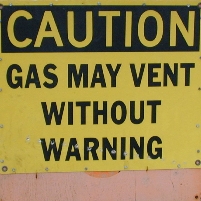BP Avoids Offshore Drilling Halt in Alaska by Building Artificial Island
Friday, June 25, 2010

BP’s oil disaster in the Gulf of Mexico prompted the federal government to call for a moratorium on all offshore drilling—and yet the company is still moving ahead, with regulators’ blessings, to tap a potentially huge undersea petroleum reserve off the coast of Alaska.
How did BP manage to pull this off? For starters, the project (dubbed “Liberty”) is technically considered “onshore” rather than “offshore” because the drilling platform is situated over an artificial island, made entirely of gravel, built by BP. The drill will bore down into the earth for two miles, then proceed another six to eight miles horizontally in order to reach an estimated 100-million-barrel reservoir of oil situated under federal waters.
The horizontal method of drilling is considered risky by scientists because it is prone to causing gas eruptions—which is what caused the explosion that destroyed the Deepwater Horizon platform in the gulf.
BP got permission from the embattled Minerals Management Service after the regulatory agency decided to allow the company to write its own environmental review of the potential impact that drilling could cause on the ecosystem and endangered species in the area.
Liberty could begin drilling as soon as this fall, if the U.S. government approves BP’s final application for the project.
-Noel Brinkerhoff
BP Is Pursuing Alaska Drilling Some Call Risky (by Ian Urbina, New York Times)
- Top Stories
- Unusual News
- Where is the Money Going?
- Controversies
- U.S. and the World
- Appointments and Resignations
- Latest News
- Can Biden Murder Trump and Get Away With it?
- Electoral Advice for the Democratic and Republican Parties
- U.S. Ambassador to Greece: Who is George Tsunis?
- Henry Kissinger: A Pre-Obituary
- U.S. Ambassador to Belize: Who is Michelle Kwan?






Comments